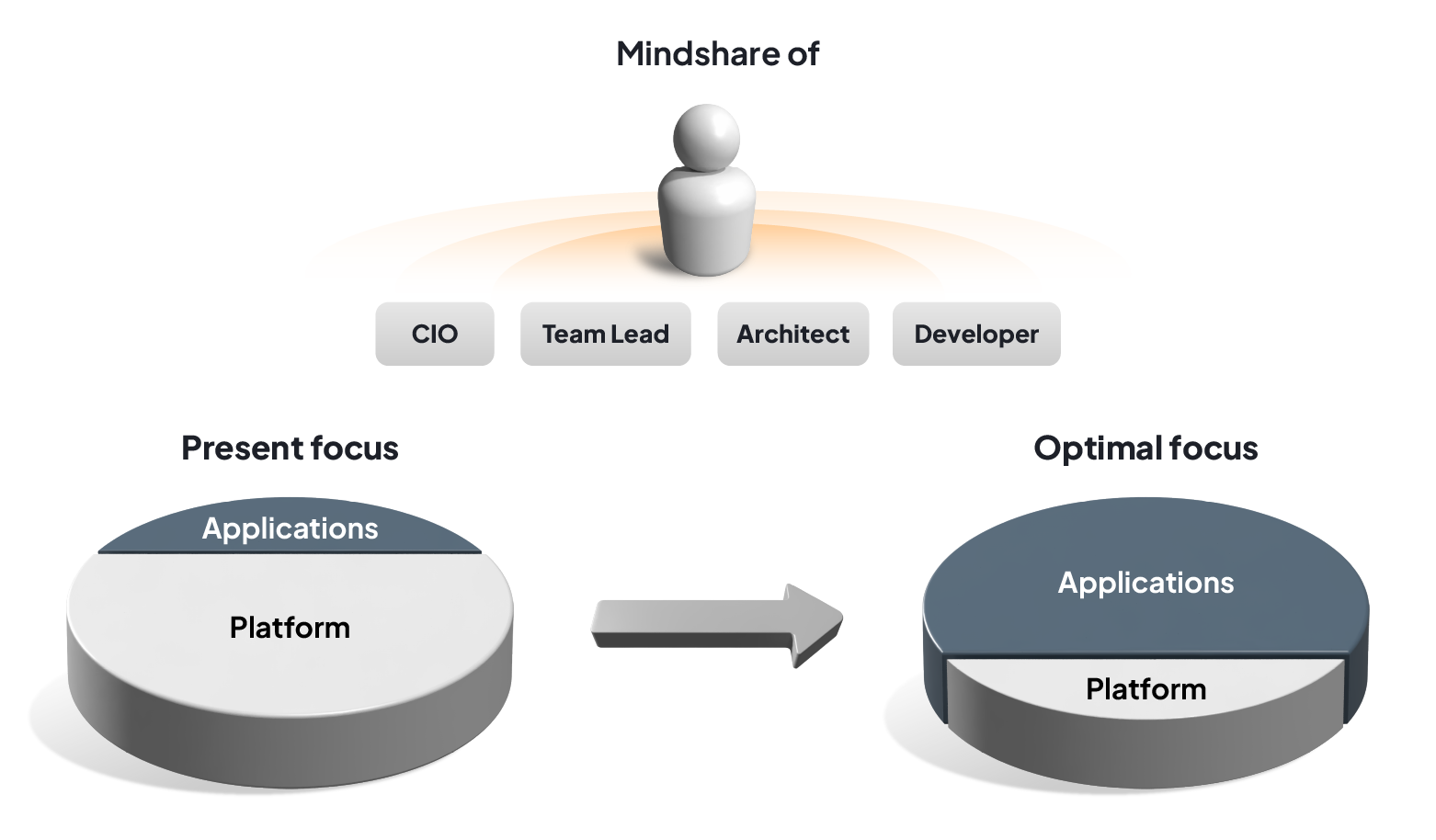What is Platformless?
Platformless allows enterprise developers to streamline their development process and focus on building apps that deliver value to users. This doesn’t mean platforms won’t exist. It just means that the complexities of a platform don’t need to be handled by application developers, shifting their focus towards what truly matters — building digital experiences that provide value to customers.

The suffix "-less" in tech signifies a shift towards increased simplicity and a more user-centric design approach. For example, serverless doesn’t mean that there is no server but rather that there’s such a clear boundary between the developer and the provider that the developer no longer needs to know about the infrastructure behind the service.
Read the Platformless ManifestoThe Problem with Platforms
Platforms are incredibly powerful and allow organizations to deploy applications at scale and speed. However, building and maintaining these platforms pose challenges such as:
- Requiring large, highly-skilled platform engineering teams.
- Making complex choices and links between multiple systems like DevOps pipelines, deployment management, monitoring and management systems, network substrates, and cluster management.
- Maintaining the platform and keeping up-to-date with technology trends.
Platformless doesn't mean the absence of a platform. Instead, it refers to creating a boundary that hides the complexity of platforms, allowing developers to focus on coding, building, and deploying without managing the platform itself.
Read the Platformless ManifestoWhat Does Platformless Include?
Platformless =
API-first
Network services are the fundamental building blocks of all modern software.

+
Cloud Native Middleware
Runtime infrastructure for building and running secure, scalable cloud native distributed systems.

+
Platform Engineering
Internal developer platforms with DevOps and SRE capabilities to unleash developers.

+
Developer Experience
Passionate developers shift focus from platforms to applications.

How Can Platformless Benefit You?
Accelerates go-to-market: You can sidestep the usual delays linked to platform management, allowing for quicker product launches and speeding up an organization's response to market demands and opportunities.
Makes best practices accessible: You can achieve high industry standards more easily as platformless embraces a realistic and sustainable approach to best practices.
Reduces complexity: You don’t need to think of the complexities involved in building and maintaining platforms, allowing you to focus on achieving strategic goals and building core business functionality.
Empowers efficient teams: Platformless advocates for a lean operational model and allows teams to concentrate on core business objectives, enhancing productivity and aligning with organizational goals.
Reduces financial overhead: You can eliminate the substantial investment needed for platform development and upkeep, enabling a more financially stable model and better allocation of people across the organization.
Summary
While software delivery and runtime platforms have significantly impacted enterprise applications, platformless aims to simplify these systems further, retaining and improving the experience for everyone involved in building, deploying, and running enterprise applications.
So how do you go platformless? You have two choices: start using a software-as-a-service offering that provides a platformless experience like Choreo, or build your own platformless experience using various building blocks or using an open platform for building platforms like Backstage.
Go Platformless with Choreo
Choreo is an internal developer platform as a service that lets you go platformless and just add developers. Harness the power of architectural best practices of CI/CD, DevOps, serverless, Kubernetes, eBPF, API management, marketplaces, domain-driven design, microservices architecture, and more.
Get Started Free Contact UsReasons Why You Shouldn’t Build Your Own Platform
- Slows product launch
- Requires significant effort to implement best practices
- Involves complex technology and specialized skills
- Demands a committed team
- High costs and risks
